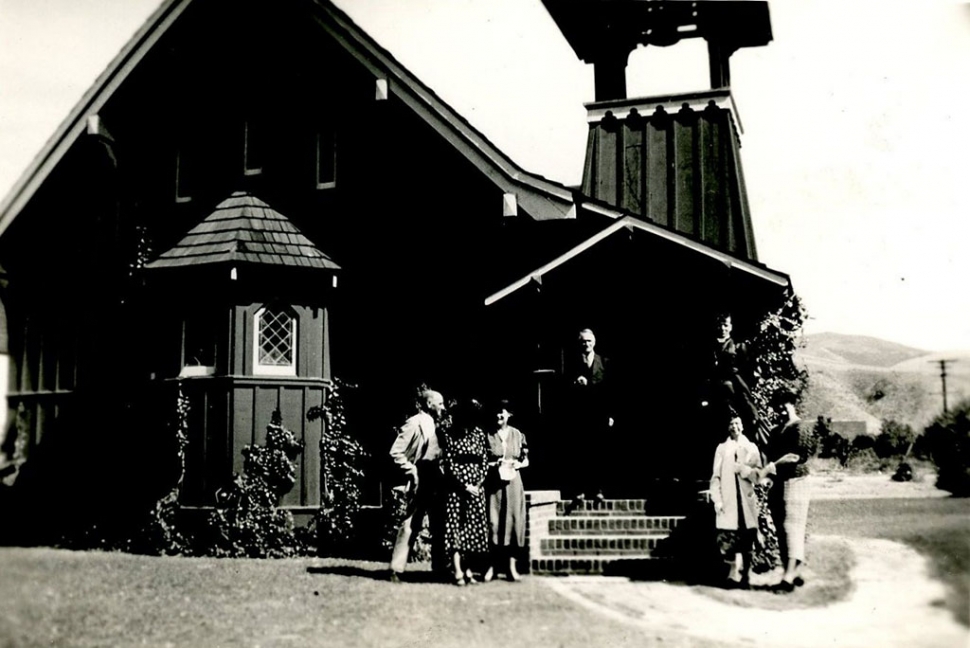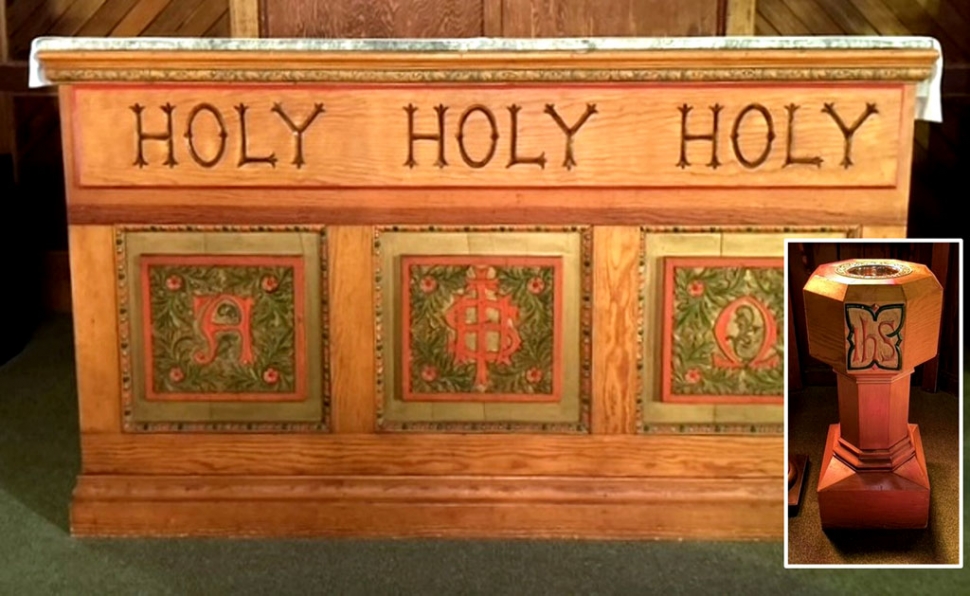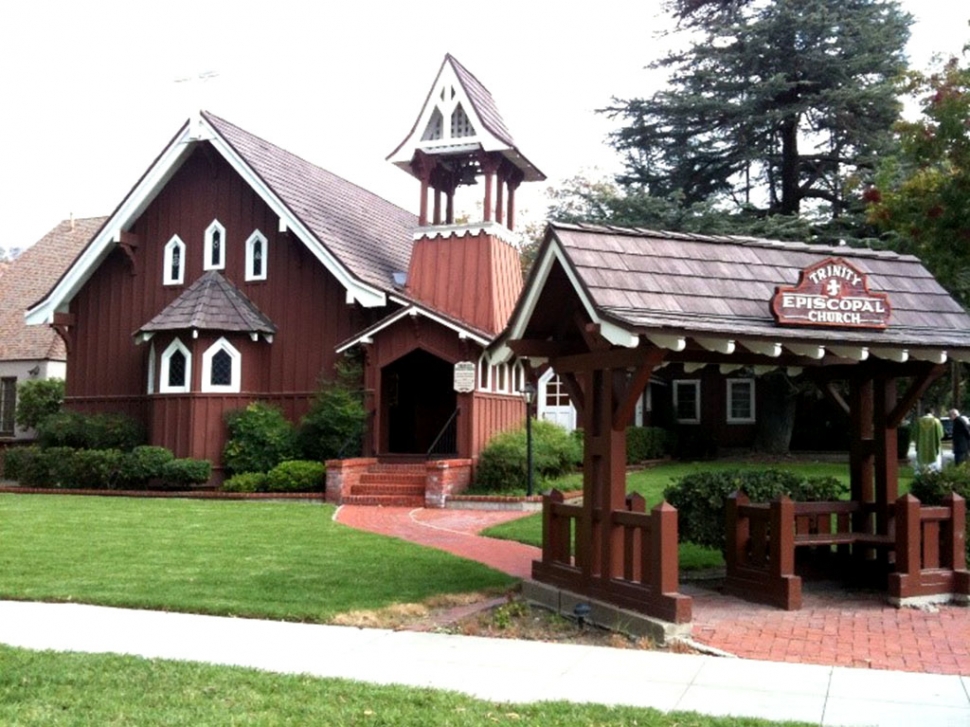|
Trinity Episcopal’s Journey to Fillmore
 Trinity Episcopal circa 1935. By Anonymous — Wednesday, March 3rd, 2021
 The altar and font given to Trinity by Mrs. Thomas Bard.  The modern Trinity Episcopal church building. Courtesy Fillmore History Museum Fillmore has many church buildings. Some are old. Some are modern. Some are no longer used as churches. Over several articles, we are going look at the history of some of them. One of the older church buildings in Fillmore hasn’t been in town all than long. Trinity Episcopal, known affectionately as “the Chocolate Church,” was built in 1901 in Hueneme, on the east side of Ventura Road (formerly Fourth Street) between Pleasant Valley Road and Clara Street, by Senator Thomas Bard for his wife, Molly. Senator Bard was Presbyterian and was active in the Presbyterian Church in Hueneme. His wife, Mary Gerberding Bard, was a devout Episcopalian. The small, “English gingerbread, Craftsman style” church was built for her worship. There had been an Episcopal contingent in Fillmore as early as 1892. A traveling minister or the minister at St. Paul’s Episcopal in Santa Paula would hold services in rented space or private homes. Frequently this would be in the home of Mr. and Mrs. Richard Stephens, a prominent businessman. By the early 1930’s the congregation decided it was time for a church of their own. By then the little church in Hueneme was no longer in use and had fallen in disrepair. Mrs. Bard, a widow since 1915, had refused several offers to purchase the building, but when she was approached by Rev. George MacDougall, who was the current minister in Santa Paula, she agreed to donate the building to the congregation in Fillmore. She also donated the altar, a communion service, a chest of linens, the font and other furnishings, a generous gift indeed. Mr. and Mrs. Stephens donated the land on the northeast corner of Second and Saratoga. Now the only problem was getting the building from Hueneme to Fillmore, about thirty (30) miles, and then rebuilding it. A local builder, Bill Yeakle, was awarded the contract to move and rebuild the Church.Under his supervision, Ed Rice, helped by a Mr. Seichert, dismantled the church in Hueneme. Each piece was numbered and brought to Fillmore by pickup trucks. The trucks were so heavily laden that they took back roads to avoid being ticketed for being overloaded. It is estimated that there was close to one million separate, numbered pieces. It was not unlike doing a jig-saw puzzle to reconstruct the building in Fillmore. Eventually the job was done and on Sunday, December 17, 1933, the Episcopal Bishop of Los Angeles, Rt. Rev. W. Bertrand Stevens, assisted by Rev. Macdougall, consecrated the little church. The night before the consecration, the first wedding was held in the church. Helen Price and Thomas Powell were married by Reverend MacDougall, the first of many weddings, baptisms, and unfortunately, funerals. Trinity Episcopal has continued to this very day, although due to Covid there are no in person services. The altar and font used by the congregation are the ones donated by Mrs. Bard in 1933. In 2014, Joanna Bard Newton, the granddaughter of Senator and Mary Bard, visited the church. She was baptized in the church when it was in Hueneme in 1917, although she admitted she didn’t remember the occasion. |
